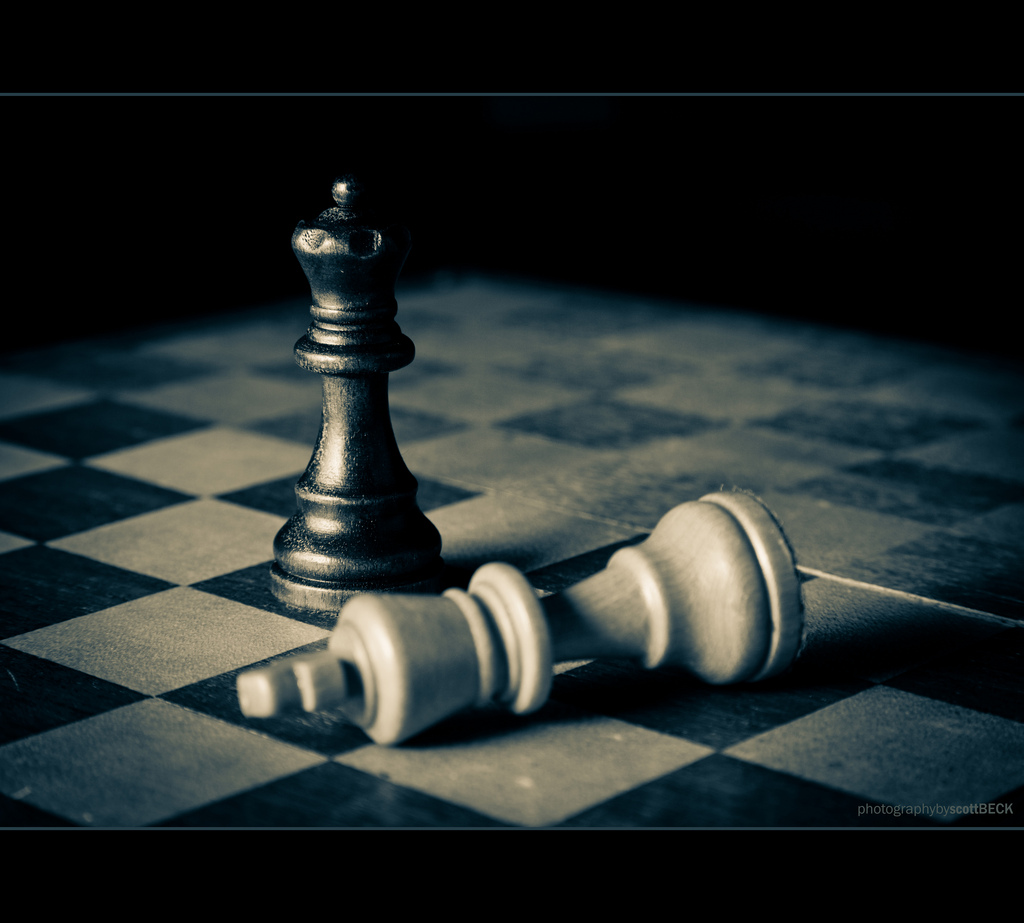INTRODUCTION
After we have explained the basic chess rules and movement of the pieces, we can take the next step. And that is learning the elementary ways of checkmating the opponent’s king.
Checkmating enemy king is the goal of every chess game. Therefore, learning how to checkmate should be one of the first steps of every chess beginner.
Since there are numerous ways to checkmate the enemy king, the question is where to begin.
While one could theoretically start with more complex mates, it wouldn’t make much sence. For educational purposes I think it is better to keep things rather simple. Therefore, learning to mate the “bare” opponent king is probably one of the very first thing every chessplayer should learn.
Because of their nature, such mates are also known as elementary mates.

The easiest way is to start with the queen checkmate and than to gradually introduce mates with other pieces. Due to the queen’s great mobility, mating only with “her majesty” is the simplest and the fastest of all elementary mates.
MATING PICTURE
Before we get to the mating technique, let us examine the final position we are aiming for. Because without knowledge of the mating picture it often happens that a player is moving aimlessly without clear idea what he should do in a certain position.
The basic principle of the queen checkmate (and any other elemenatry checkmate, for that matter) is to bring the enemy king either to the corner or the edge of the board.
Several possible mating pictures are given on the diagrams below (please note that for simplicity’s sake I have assumed that White is always the stronger side)
The reader can notice that the White king is especially relevant in every diagram. Without the participation of the monarch, none of the elementary mates can be delivered.
While White is trying to deliver the checkmate, it is also important to avoid a few pitfalls. Because instead of checkmating, White may end up STALEMATING his opponent instead. Typical stalemate positions are given on the following diagrams:
After defining the mating picture we can start learning the mating mechanicsm. The main goal is to force the enemy king to the edge or the corner of the board. Fortunately, with the queen checkmate that task is rather straightforward.
Therefore, we will examine two possible ways of doing so.
First of all, we will consider the beginner’s method, where White uses both the king and the queen to push the enemy king back. This method is more reliable, but also somewhat longer.
MATING MECHANISM #1
Let us consider the following position, where White’s goal is to give the queen checkmate.
MATING MECHANISM 2
The second mating mechanism that will be examined is somewhat more sophisticated and includes mostly only queen moves.
But what’s the point of learning another mechanicsm if one is already known? Well, since the second mechanicsm is much faster, it might come in handy while trying to mate someone with little time on the clock while playing chess on internet.
Other practical value is nonexistent. Nevertheless, this banal example shows that often there are multiple solutions in chess.
Let us examine the starting position once again.
It is noticable that the 2nd method is much faster.
But then again, there is a very old story about a rabbit and a tortoise.

CONCLUSION
Congratulations. You have just learned the basic way to win a chess game – a queen checkmate.
If you have any questions, comments and suggestions, please comment below, or contact me in any way, I will try to answer 🙂

